Space
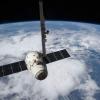 <p>High-tech space hardware designed and built at CU Boulder for biomedical experiments was successfully launched aboard the commercial SpaceX Dragon capsule to the International Space Station (ISS) July 18.</p>
<p>High-tech space hardware designed and built at CU Boulder for biomedical experiments was successfully launched aboard the commercial SpaceX Dragon capsule to the International Space Station (ISS) July 18.</p>- Even though CU Boulder Professor Fran Bagenal has been a part of five NASA planetary missions, including the Galileo mission to Jupiter in 1995, this latest mission to Jupiter called “Juno” that she’s involved in has her nervous. That’s because this time the spacecraft, which enters orbit July 4, will be flying dangerously close to the big planet’s magnetic field.
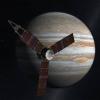 <p>A group of University of Colorado Boulder faculty and students are anxiously awaiting the arrival of NASA’s Juno spacecraft at Jupiter July 4, a mission expected to reveal the hidden interior of the gas giant as well as keys to how our solar system formed.</p>
<p>A group of University of Colorado Boulder faculty and students are anxiously awaiting the arrival of NASA’s Juno spacecraft at Jupiter July 4, a mission expected to reveal the hidden interior of the gas giant as well as keys to how our solar system formed.</p>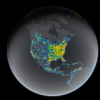 <p>The Milky Way, the brilliant river of stars that has dominated the night sky and human imaginations since time immemorial, is but a faded memory to one third of humanity and 80 percent of Americans, according to a new global atlas of light pollution produced by Italian and American scientists.</p>
<p>The Milky Way, the brilliant river of stars that has dominated the night sky and human imaginations since time immemorial, is but a faded memory to one third of humanity and 80 percent of Americans, according to a new global atlas of light pollution produced by Italian and American scientists.</p>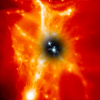 <p>Galaxies “waste” large amounts of heavy elements generated by star formation by ejecting them up to a million light years away into their surrounding halos and deep space, according to a new study led by the University of Colorado Boulder.</p>
<p>Galaxies “waste” large amounts of heavy elements generated by star formation by ejecting them up to a million light years away into their surrounding halos and deep space, according to a new study led by the University of Colorado Boulder.</p> <p>For some comets, breaking up is not that hard to do. A new study led by Purdue University and CU-Boulder indicates the bodies of some periodic comets – objects that orbit the sun in less than 200 years – may regularly split in two, then reunite down the road.</p>
<p>For some comets, breaking up is not that hard to do. A new study led by Purdue University and CU-Boulder indicates the bodies of some periodic comets – objects that orbit the sun in less than 200 years – may regularly split in two, then reunite down the road.</p>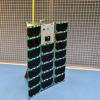 The bread loaf-sized Miniature X-Ray Solar Spectrometer, or MinXSS, CubeSat will be deployed from an airlock on the International Space Station (ISS) at 4 a.m. MDT on Monday, May 16, beginning its journey into space where it will study emissions from the sun that can affect ground-based communications systems.
The bread loaf-sized Miniature X-Ray Solar Spectrometer, or MinXSS, CubeSat will be deployed from an airlock on the International Space Station (ISS) at 4 a.m. MDT on Monday, May 16, beginning its journey into space where it will study emissions from the sun that can affect ground-based communications systems. A 3-D animation created by NASA’s Scientific Visualization Studio using data from the MAVEN mission to Mars is the corporate winner of the inaugural Data Stories video contest sponsored by Science magazine for videos that tell stories about data. The video explains how the solar wind is driving particles from the upper atmosphere of Mars into space, which may have caused the planet to dry out and cool over the eons.
A 3-D animation created by NASA’s Scientific Visualization Studio using data from the MAVEN mission to Mars is the corporate winner of the inaugural Data Stories video contest sponsored by Science magazine for videos that tell stories about data. The video explains how the solar wind is driving particles from the upper atmosphere of Mars into space, which may have caused the planet to dry out and cool over the eons. First observed in 2005 by NASA’s Cassini spacecraft orbiting Saturn, a plume shooting into space from cracks on the icy surface of Enceladus is coming from a subterranean, salty ocean beneath the moon’s surface. The latest observations by a team including CU-Boulder Professor Larry Esposito indicate at least some of the narrow jets blast with increased fury when the moon is farther from Saturn.
First observed in 2005 by NASA’s Cassini spacecraft orbiting Saturn, a plume shooting into space from cracks on the icy surface of Enceladus is coming from a subterranean, salty ocean beneath the moon’s surface. The latest observations by a team including CU-Boulder Professor Larry Esposito indicate at least some of the narrow jets blast with increased fury when the moon is farther from Saturn. Six grants totaling $250,000 have been awarded to projects supporting CU-Boulder’s Grand Challenge "Our Space. Our Future." which features two major initiatives – Earth Lab and Integrated Remote and In Situ Sensing Initiative (IRISS) – plus more than a dozen related projects.
Six grants totaling $250,000 have been awarded to projects supporting CU-Boulder’s Grand Challenge "Our Space. Our Future." which features two major initiatives – Earth Lab and Integrated Remote and In Situ Sensing Initiative (IRISS) – plus more than a dozen related projects.


